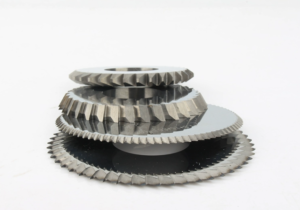Table of Contents
ToggleTungsten Carbide Tipped Saw Blade
When it comes to cutting materials with precision and efficiency, the right tools can make all the difference. Among these tools, a tungsten carbide tipped saw blade stands out as a versatile and reliable choice. With its robust design and sharp teeth, this type of saw blade is ideal for a variety of cutting tasks. However, with so many options available, how do you choose the right tungsten carbide tipped saw blade for your specific needs? Let’s explore the essential factors that can guide your decision.
Understanding Tungsten Carbide Tipped Saw Blades
Tungsten carbide is a material known for its exceptional hardness and resistance to wear. A saw blade tipped with tungsten carbide typically features teeth made from this hardy material, which allows for cleaner cuts and longer life compared to blades made from other substances. This durability makes tungsten carbide tipped saw blades suitable for cutting not just wood, but also metal, plastic, and composites.
The Cutting Applications
When considering what tungsten carbide tipped saw blade to purchase, it’s crucial to think about the materials you will be cutting. For instance, if you’re primarily working with hardwoods, you might want a blade designed specifically for that. Blades with more teeth, often referred to as “fine-tooth blades,” ensure a smoother finish when cutting hardwood.
On the other hand, if your cutting needs include softer materials or even sheet metal, you might opt for a blade with fewer teeth. These blades remove material faster, allowing for quicker cuts, but may leave behind a rougher edge. A perfect example of this is a 24-tooth blade, which can easily slice through softwoods and will perform well with sheet metal applications, making it highly effective for carpenters or contractors who require speed and efficiency.
Size Matters
The size of the saw blade is another critical consideration. Tungsten carbide tipped saw blades come in various diameters, generally ranging from 6 to 12 inches and beyond. The diameter you choose will largely depend on the type of saw you are using and the material being cut.
For example, if you’re using a table saw that can accommodate a larger blade, opting for a 10-inch tungsten carbide tipped saw blade allows for deeper cuts, making it invaluable for ripping sheets of plywood. Alternatively, a smaller, 7- or 8-inch blade works best for circular saws or smaller tasks, providing versatility for DIY enthusiasts working on home improvement projects.
Tooth Design and Configuration
Beyond size and material, the design of the teeth is a crucial factor in determining both performance and application. Tungsten carbide tipped saw blades can have a variety of tooth configurations, with each configuration suited for different cutting needs.
Consider a blade with an alternate top bevel (ATB) tooth design. This setup, where the teeth are angled alternatively, excels in making clean crosscuts in wood, making it ideal for furniture makers. Conversely, a flat-top grind (FTG) tooth design cuts straight across and is perfect for ripping lumber, allowing for quick cuts along the grain.
Product Benefits
Investing in a tungsten carbide tipped saw blade comes with a slew of benefits that every carpentry professional or hobbyist should take into account. First and foremost is the blade’s longevity. Unlike standard blades, tungsten carbide tipped saw blades maintain their sharpness longer, which means fewer replacements and increased productivity.
Additionally, these blades provide enhanced cutting efficiency. The precision cutting capabilities often lead to a cleaner edge, which requires less finishing work afterward. This is particularly valuable for professional woodworkers who want to minimize the time spent on project completion.
Moreover, tungsten carbide tipped saw blades generate less heat during operation, reducing the risk of warping or damage to materials being cut. This feature makes these blades especially beneficial when working with sensitive materials like veneer or laminate.
Price vs. Value
When it comes to purchasing a tungsten carbide tipped saw blade, many customers inevitably weigh cost against value. While it may seem tempting to opt for cheaper blades, investing in a high-quality tungsten carbide tipped blade ultimately pays off. Over time, you will find that the efficiency, reduced wear, and superior cutting ability translate into savings not only in material costs but also in time and labor.
Research and Reviews
A prudent way to ensure you’re buying the right tungsten carbide tipped saw blade is to do thorough research. Online reviews and testimonials from other customers can provide real-world insights into performance and longevity. Websites and discussion forums dedicated to woodworking are invaluable resources when comparing various brands and models, allowing you to assess which blade best meets your needs.
Choosing the right tungsten carbide tipped saw blade is more than just a matter of picking a product off the shelf. It necessitates an understanding of your cutting applications, an assessment of blade design, size, and tooth configuration, as well as recognition of the long-term benefits that come with investing in quality. By considering these aspects, you empower yourself to select a blade that not only meets your immediate needs but also enhances your overall cutting experience.
When presented with options for cutting tools, remember the power and precision of a tungsten carbide tipped saw blade; your projects will thank you for it in the long run. Whether you are a seasoned professional or a budding DIYer, finding the perfect tungsten carbide tipped saw blade tailored to your specific tasks will lead to better results and a more enjoyable crafting process.
